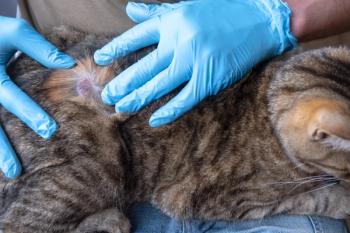
AKC registrations continue to decline
While new laws are closing puppy mills, they also are putting reputable breeders out of business.
NATIONAL REPORT — More than 33 states last year enacted regulations targeting animal breeders. While the crackdown is closing puppy mills, it's also putting reputable breeders out of business.
Patti Strand, executive director of the National Animal Interest Alliance (NAIA), an animal-welfare organization aligned with purebred breeders and pet enthusasiasts, believes this country is truly at a turning point. Why?
Numbers of American Kennel Club (AKC) registrations have posted sharp decreases since 1992 levels, and the numbers for all purebred animals are thought to be on the decline as well. What is up, however, are purebred dog importations (see "Breed Wars").
Strand questions the health and safety implications of imported purebreds and the long-term impact on domestic pet populations.
Table 1: AKC registrations
Last year, NAIA tracked 700 pieces of legislation influencing its members. An evaluation of data from the AKC depicts registrations last year at 716,195 animals (Tables 1 and 2). Only half of purebred owners are believed to register their dogs through AKC. The data suggests last year's registrations are closer to 1965 levels, and she believes it will continue to spiral downward.
Table 2: AKC registered dogs per 1,000 people
Consider the Dalmatian breed. Following a spike in breeding after the Disney release of 101 Dalmatians in 1996, breed numbers have been plummeting (Table 3). Breed registrations peaked in 1993 at 42,816 dogs and dropped to just 983 in 2008.
Table 3: Dalmatian registrations
It's a driving impetus behind NAIA's creation of a kind of pet census. The idea is to better track numbers of animals from purebreds to shelter animals and monitor placement, ownership and relinquishment trends.
"Breeders have been the recipients of 30 years of really bad publicity during which time they have been portrayed as responsible for pet overpopulation, the creation of genetic diseases and bad temperaments," Strand says. "People come away thinking they just don't care about dogs."
These messages have resulted in wide-scale efforts by the AKC and other breed groups to fund research and support open discourse about the health problems associated with purebred dogs.
The history of anti-breeding laws came into vogue in the 1980s, Strand explains, and the public consciousness has shifted from targeting unscrupulous breeders to all breeders. The solution to a pet overpopulation problem lies somewhere inbetween.
"Very often the brush stroke is very broad, and it defines all breeders as part of the problem. It stigmatizes those who breed responsibly," Strand adds.
And yet critics believe that dog breeders are responsible for propagating genetic diseases by simply practicing selective breeding. And there is a very serious animal overpopulation problem resulting in large intakes within shelters. The only way to have an overpopulation problem is by breeding.
But the problem is far more complex, Strand contends. The pet overpopulation is driven by multiple reasons including unplanned litters, strays, importations and other factors.
The country, Strand says, also faces many challenges to pet ownership including costs, dangerous dogs, neighborhood nuisances, surplus of shelter dogs, feral cats and hoarding.
And a 2008 American Pet Products Association study confirms this country is actively trying to spay and neuter its way out of a surplus of unwanted pets. In fact, the association estimates that 76 percent to 87 percent of pets were neutered in 2008, Strand says.
The questions have become: Is it enough? And what about demand?
Newsletter
From exam room tips to practice management insights, get trusted veterinary news delivered straight to your inbox—subscribe to dvm360.




